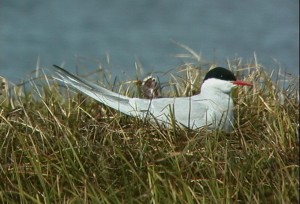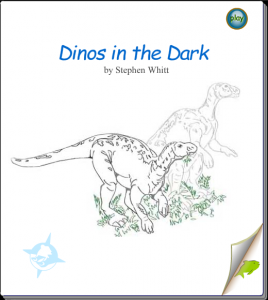In this article, we’ve highlighted lessons that help students understand that animals and plants can only survive in certain environments. The lessons align with Concept A of Essential Principle 3 of the Climate Sciences (Life on Earth depends on, is shaped by, and affects climate), which states:
Individual organisms survive within specific ranges of temperature, precipitation, humidity, and sunlight. Organisms exposed to climate conditions outside their normal range must adapt or migrate, or they will perish.
Before students can understand how changes in climate affect living organisms, they first must understand that all organisms are adapted for life in certain climates. The lessons highlighted here help build that important foundational knowledge in the elementary years.
The elementary grades are also an appropriate time to begin investigating migratory patterns of various animals and how migration is connected to changing environmental conditions. Elementary students can also study fossils and begin to explore the idea that fossils provide information about past climates. Introducing all these concepts at an early age prepares students to consider how a changing climate might impact organisms today.
For each science lesson, we’ve included the appropriate content standard from the National Science Education Standards. You can read the entire National Science Education Standards online for free or register to download the free PDF. The content standards are found in Chapter 6.
ORGANISMS AND THEIR ENVIRONMENTS
Designing a Native Plants Garden (Grades K-2)
In this lesson, students will compare native vegetation in different parts of the United States. They will then explore web sites to learn about native plants in their own region, and design gardens containing those local plants. This lesson meets the Life Science content standard of the National Science Education Standards.
Design a Regional “Eco Park” (Grades 3-5)
Students will use the web to find out about the plants and animals that live in their local area. They will design “eco parks” containing local plants and animals. This lesson meets the Life Science content standard of the National Science Education Standards.
Animal Diversity (Grades K-2)
This lesson exposes children to a wide range of animals and guides them through observation of animal similarities, differences, and environmental adaptations. It meets the Science as Inquiry and Life Science content standards of the National Science Education Standards.
Animal Adaptations (Grades 3-5)
In this lesson, students participate in classroom discussions and online research to learn more about animals and how well (or poorly) they’ve adapted to satisfying their needs in their natural habitats. It meets the Science as Inquiry and Life Science content standards of the National Science Education Standards.
MIGRATION
Arctic Terns From North to South (Grades K-2)
The Arctic tern is an amazing migratory bird, traveling over 22,000 miles in a year from the Arctic to the Antarctic and back again. Students will map this bird’s migration route and consider why it wants to migrate so far. They will conclude by writing paragraphs describing the Arctic tern’s migration route and explaining how they think it knows when it’s time to migrate. This lesson meets the Life Science content standard of the National Science Education Standards.
Arctic Tern Migration Simulation (Grades 3-5)
Students create a model Arctic tern using patterns and heavy card stock. They simulate fishing, nesting, and migration using their models. The activity meets the Life Science content standard of the National Science Education Standards.
Beluga Whales in the Ice (Grades K-2)
This lesson asks students to think about how beluga whales survive in icy Arctic and subarctic waters and why they sometimes need to migrate. It meets the Life Science content standard of the National Science Education Standards.
Caribou Migration (Grades 3-5)
This lesson introduces students to caribou and their migratory behavior. It meets the Life Science content standard of the National Science Education Standards.
FOSSILS
Dinos in the Dark (Grades K-5)
This informational text from Beyond Penguins and Polar Bears describes adaptations that allowed dinosaurs to survive in cold and dark polar environments. The text is available at three reading levels: K-1, 2-3, and 4-5 and as a text-only document, a full-color illustrated book, and an electronic book with recorded audio narration. Reading this text can help meet the Life Science content standard of the National Science Education Standards.
Fossils (Grades 3-5)
In this lesson, students will act as paleontologists and attempt to figure out the environment in which various fossils would have existed. This lesson meets the National Science Education Standards Content Standard A: Science as Inquiry and Content Standard D: Earth and Space Science.
This article was written by Jessica Fries-Gaither. Jessica is an education resource specialist at The Ohio State University and project director of Beyond Penguins and Polar Bears. She has taught in elementary and middle school settings. Email Jessica at beyondweather@msteacher.org.
Copyright May 2011 – The Ohio State University. This material is based upon work supported by the National Science Foundation under Grant No. 1034922. Any opinions, findings, and conclusions or recommendations expressed in this material are those of the author(s) and do not necessarily reflect the views of the National Science Foundation. This work is licensed under an Attribution-ShareAlike 3.0 Unported Creative Commons license.






